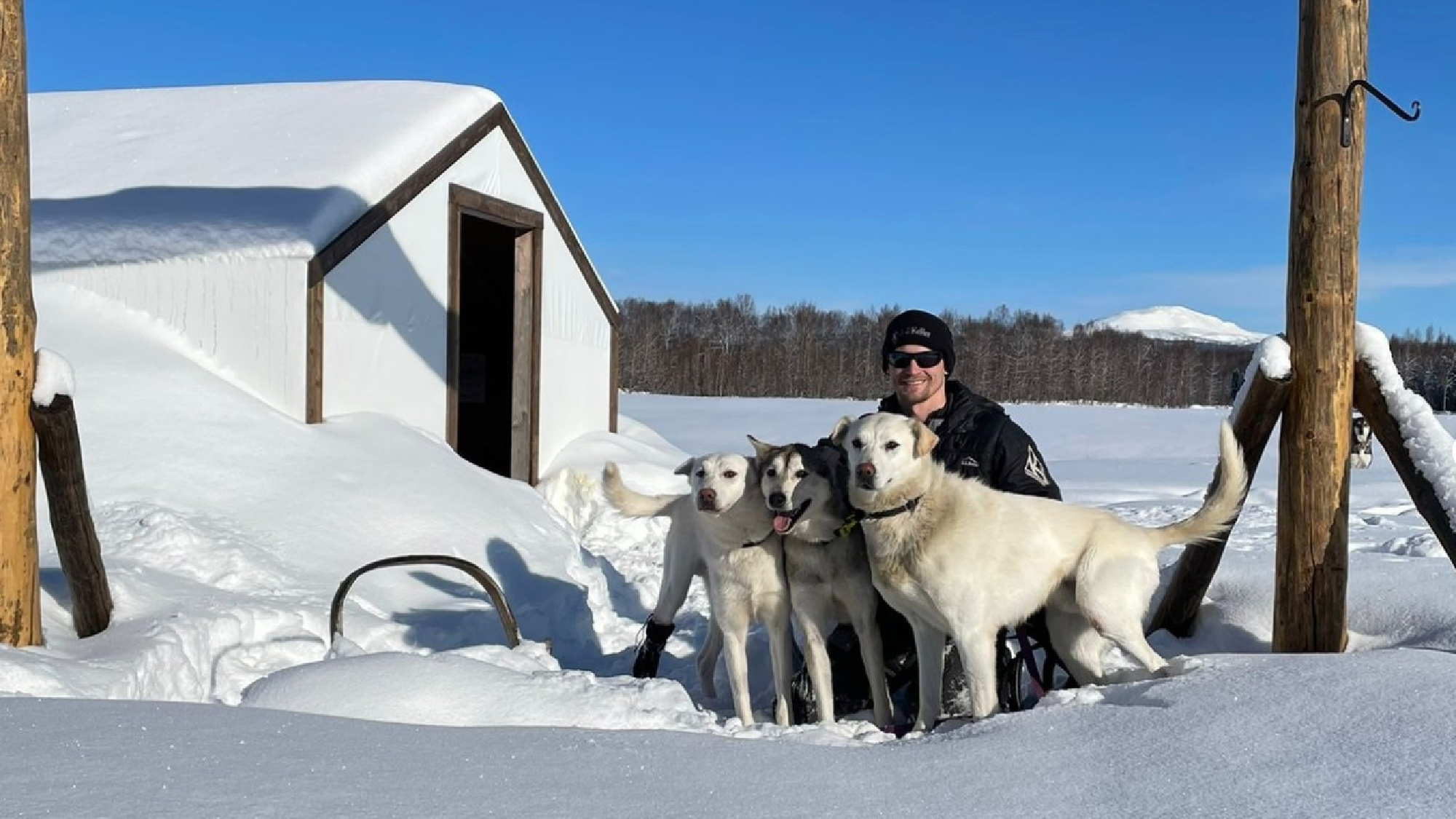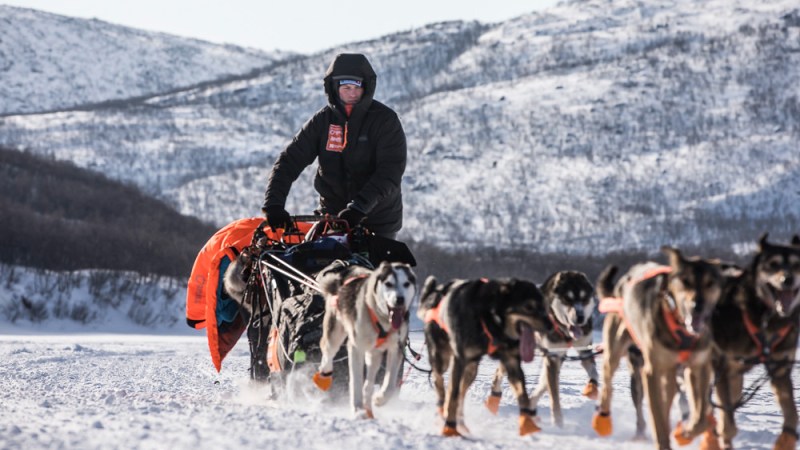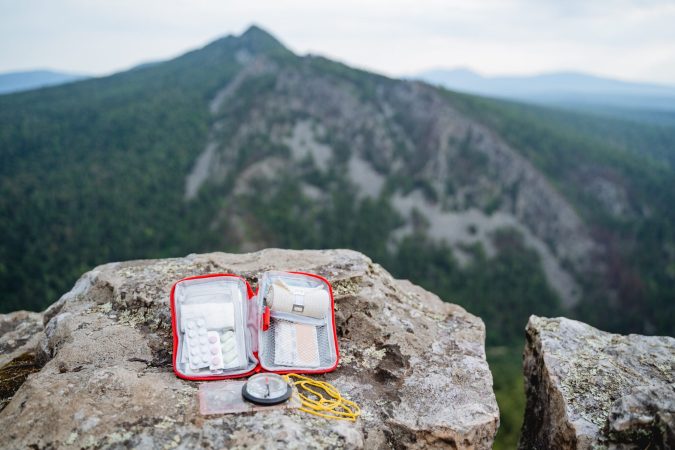As Dallas Seavey and his team of dogs work their way across Alaska in the 52nd running of the Iditarod, the competitor is now handicapped by a 2-hour penalty for what the Iditarod Trail Committee called an insufficient attempt to gut a moose.
Seavey was forced to shoot the moose in question with a handgun at roughly 2 a.m. on March 5 after the animal got tangled with his dogs on the trail, severely injuring one dog. (The injured dog, a female named Faloo, was flown to Anchorage for emergency treatment at the next checkpoint.) Rule 34 of the Iditarod Trail Race requires that any musher who kills a big game animal in self-defense must gut the animal before continuing the race. This helps the trail-support team salvage the meat for consumption.
But an Iditarod Trail Committee press release on Tuesday announced Seavey didn’t do the requisite job of gutting the moose before continuing the race. He reportedly spent 10 minutes at the kill site before leaving, although it’s unclear how the Committee determined this time frame. (The Committee did not immediately reply to a request for comment.) Iditarod race marshal Walter Palfrey convened a three-person panel of race officials to determine how Seavey would be penalized, and all three officials voted unanimously to add 2 hours to his mandatory 24-hour layover.
“I gutted it the best I could, but it was ugly,” Seavey told reporters last week and received word of the penalty at the Cripple checkpoint, a post on his Instagram account says.
“It was there that Dallas learned of the penalty levied against him for failing to adequately gut the moose while attending to Faloo’s injuries,” the post reads. “Reflecting on the tumultuous events that had transpired, Dallas acknowledged the shortcomings in his response, attributing them to the shock and urgency of the moment. Humbly, he admitted that in hindsight, there were things he could have done differently and expressed his belief that the Iditarod officials had made the right call, stating ‘the rules are the rules.’ Dallas also suggested that there was more than one penalty in this first half of the race: First being stomped by a moose, next the loss of a dog on the team (thankfully now in recovery), third the lost time dealing with the situation on the trail, and lastly the time penalty of 2 hours.”
Race rule 34 states: “In the event that an edible big game animal (i.e., moose, caribou, buffalo), is killed in defense of life or property, the musher must gut the animal and report the incident to a race official at the next checkpoint. Following teams must help gut the animal when possible. No teams may pass until the animal has been gutted and the musher killing the animal has proceeded. Any other animal killed in defense of life or property must be reported to a race official, but need not be gutted.”
Such a time penalty could ultimately break Seavey’s attempt at a sixth Iditarod championship; the winner of the 2023 Iditarod crossed the finish line just 1 hour and 23 minutes before the second-place musher. Seavey has completed his mandatory 24 hour layover plus the 2-hour penalty, however, and at the time of publication is currently in first place with fewer than 200 miles to the finish. If Seavey keeps the lead to win, he would beat out Rick Swenson for the most wins in Iditarod history. Both men are currently tied with five wins each.
How Long Does It Take to Gut a Moose?
So, how long should it have taken Seavey to gut the moose? OL staff writer, moose hunter, and Alaska resident Tyler Freel says it takes him 10 to 15 minutes to gut a moose in good conditions, and perhaps twice as long if he’s taking his time. But Freel is also an experienced big game hunter and that estimate doesn’t factor in the time it takes to move a moose into position for gutting — especially if the gutter is alone. Start to finish, gutting a moose properly could take a rookie a few hours.
“If I were in a big hurry and had the moose totally lined up, ready to cut, and had help, I might be able to do it in 10 minutes,” says Freel. “But that’s very fast.”
Read Next: “He Was Charging Full Speed Right at Me.” The Alaskan Musher Attacked by a Moose Shares Her Story
Seavey’s hasty gutting job, as noted in his Instagram post, was rushed in part due to concerns over getting his severely injured dog to safety. Ultimately, the race’s gutting rules are in place to make sure that salvageable meat isn’t wasted — and in this case, it wasn’t, according to the Iditarod Trail Committee.
Seavey is hardly the first Iditarod musher to kill a big game animal in self-defense on the course. One particularly iconic encounter occurred in 1985, when late musher Susan Butcher fought off a moose with an ax and a parka, and another musher dispatched it.









